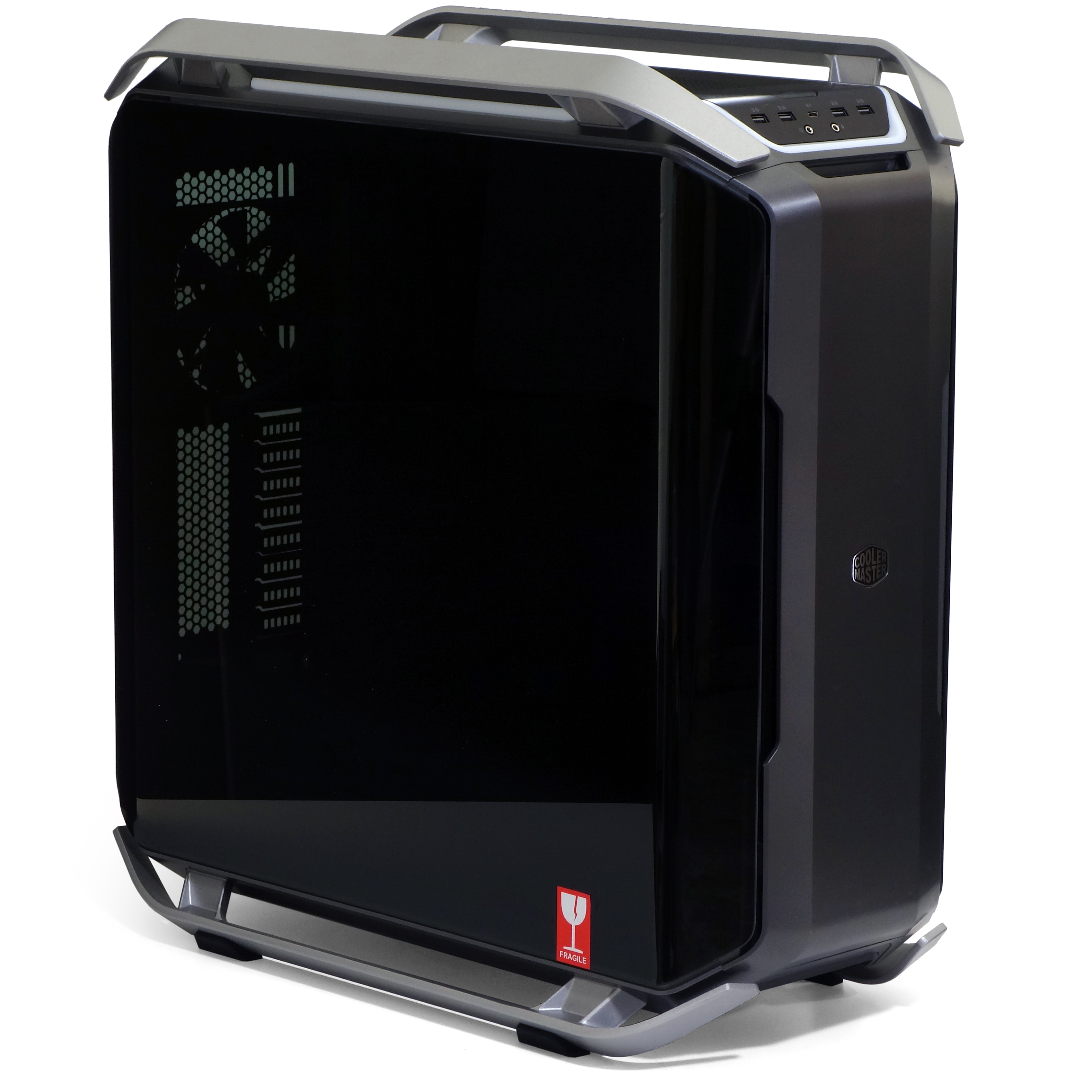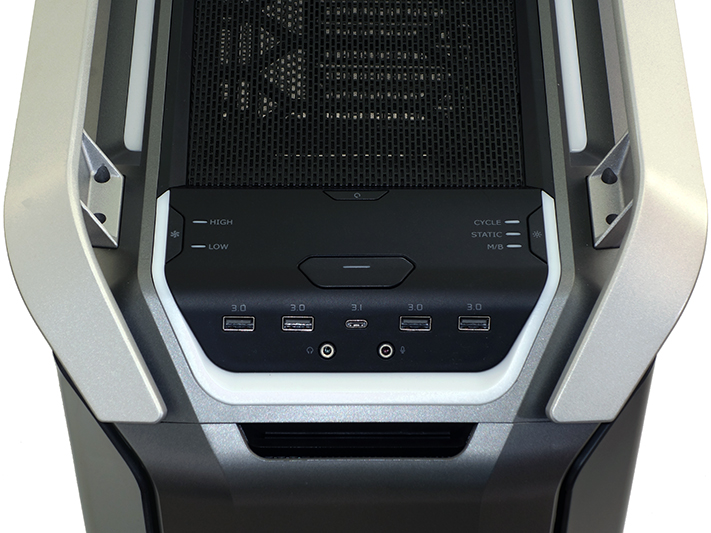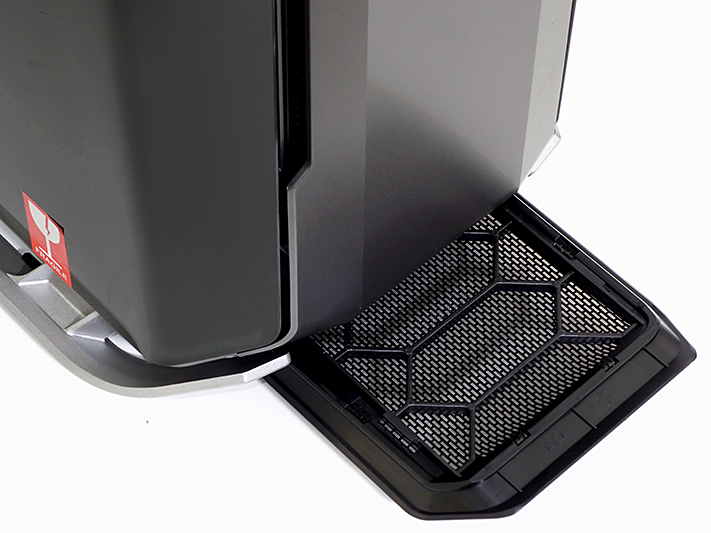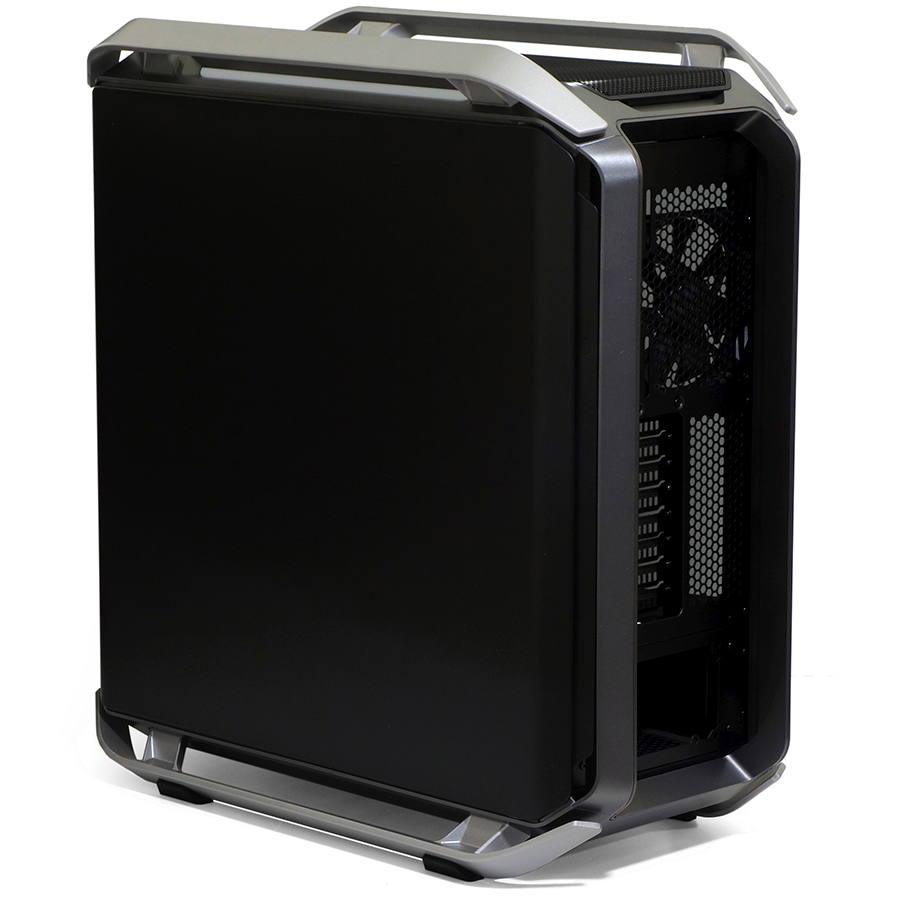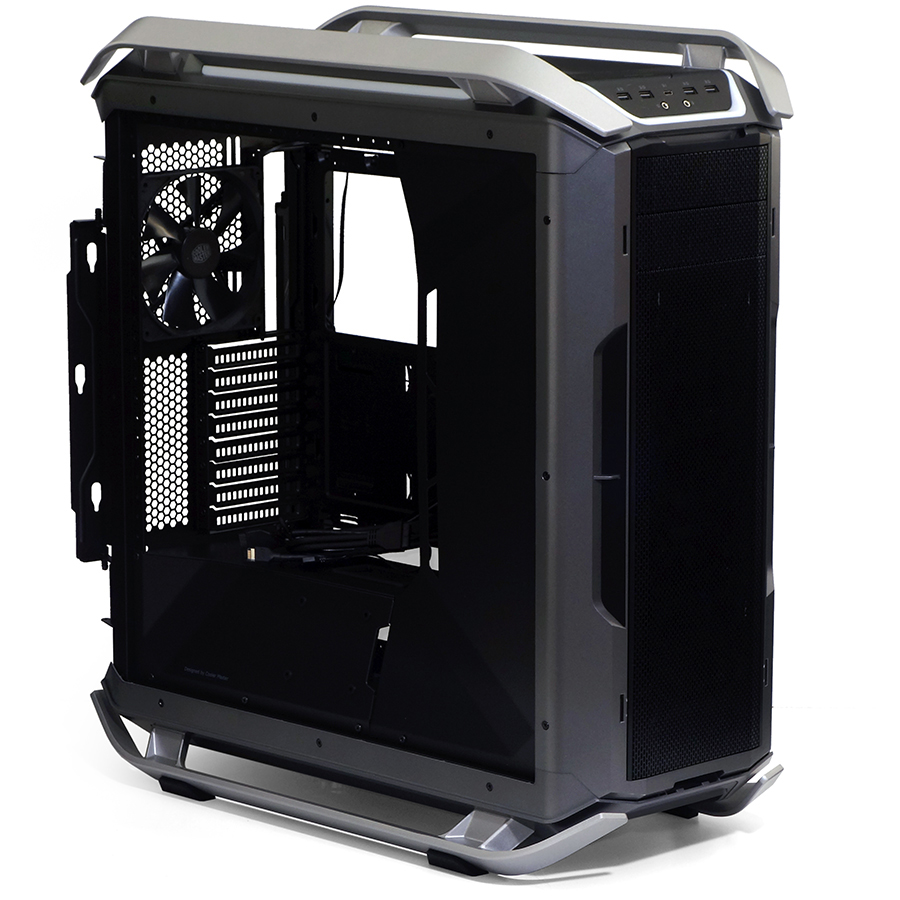Early Verdict
Cooler Master’s Cosmos C700P delivers the quality and flexibility high-end builders desire for building custom configurations. Mediocre as-delivered performance and a high price make the stock configuration difficult to recommend and award.
Pros
- +
Full Modular Design can be assembled in various configurations
- +
Additional components available through Cooler Master for full customization
- +
Large flex-mount rails for additional drive trays and liquid cooling components
- +
Supports motherboards up to 12.3” deep and cards up to 19.3” long
- +
Room for two 3x 140mm radiators
- +
Full-length, front-pull dust filter for bottom panel
- +
Supports latest 10Gb/s USB 3.1 motherboard header
- +
Excellent production quality
Cons
- -
Expensive
- -
Stock configuration supports only three internal drives
- -
Mediocre performance when using stock cooling
- -
EATX labeling is inaccurate (design is not fully compliant)
Why you can trust Tom's Hardware
Features & Specifications
Remember XL-ATX? Although it was never officially adopted by a standards organization, the name was used by at least three manufacturers to denote motherboards up to 13.6” top-to-bottom and up to 10.7” deep. The extra depth gave it more room around the socket compared to ATX (12” x 9.6”), and the extra space at the bottom allowed one more slot than either ATX or EATX (12” x 13”). In an age of multi-channel memory controllers and quad-SLI, the case was made.
Or was it? Because no standards body made XL-ATX official, it gradually drifted away. Motherboard manufacturers started applying EATX labeling to their 12” x 10.6” boards, since these in-between boards could fit larger cases but not smaller ones. That move left many case manufacturers stranded, because cases designed specifically to fit those boards couldn’t wear the EATX label. Hoping to retain some level of market consistency, we even denied that label to a case with more than enough room for a 13”-deep board but cable passages where any standards committee would have required the extra EATX standoffs. Yet one manufacturer has come up with an even bolder solution: Cooler Master decided to label its XL-ATX C700P as EATX, and then tell people it doesn’t support the 12” by 13” official EATX standard.
Specifications
For the sake of simplicity, I’m instructing our team to classify Cooler Master’s latest Cosmos as an ATX full tower. We’ve recently begun putting motherboard depth in our specs to assist buyers who don’t know what their 10.6” boards will fit, so Cooler Master’s fitment caveat fits right in. As for buyers who don’t know their 10.6”-deep boards will fit cases that aren’t labeled EATX, or those who think that their 13”-deep boards will fit the Cosmos C700P, we can hope their mistake will lead them to read more reviews prior to future builds.
Cooler Master is going truly fancy in its latest manufacturing techniques, replacing the tubular rails of previous models with castings and putting a curve on the forward edge of its tempered-glass side panel. We also see white stripes down the sides of the top panel, the bottoms of the lower rails, and around the port section, all of which contain RGB lighting.
The “Front Panel” port section is angled forward at the front of the top panel, and it contains a single USB 3.1 Gen 2 port (Type-C, 10Gb/s), four USB 3.0 ports, headphone and mic jacks, power and reset buttons, and fan speed and RGB mode selectors. RGB mode selections include color cycling, static color, motherboard-controlled (via an RGB header), or “off.” Yes, “Off” can be an important setting.
Cooler Master has gotten onboard with customer demand for a front-pull bottom filter, and the one shown covers the entire length of the bottom regardless of what builders decide to mount there. Now would be a good time to mention that the C700P is fully modular.
Out back we find a pop-off decorative plastic ring that I kept forgetting to put back on, eight expansion slots, a 140mm fan on slotted mounts, and another set of mounting slots for the screw spacing of 120mm fans. Those slots allow fans to be slid up or down the chassis for optimal placement of rear-panel radiators.
Get Tom's Hardware's best news and in-depth reviews, straight to your inbox.
The side panels aren’t latched but instead use special springs to make the panels snap tight when approaching the closed position. Lifting those panels off the brackets gives us a better look at the decorative panels that cover the power supply, 3.5” trays, and any front-panel radiator. The fascia also lifts off after being swung out, and users who frequently access drive bays will better appreciate the face’s ability to stay in a partially swung-down position.
A triple-fan bracket resides behind the front intake panel, along with two mounted 140mm fans. A single 5.25” bay can be replaced with included dual-bay brackets, but the included fan bracket intrudes on required mounting space. Cooler Master sells alternative parts to fill out the Cosmos C700P in numerous configurations.
Another triple-fan bracket is mounted under the vented top panel. Both vented panels include mesh dust filters, and both locations support radiators up to 20” long. Since the case is modular, this fan bracket can also be moved to the bottom panel if desired.
Two 2.5” trays are mounted to the back of the motherboard tray, but one of those is filled with Cooler Master’s custom controller for lights and fans. Another trim panel hides the right-side view of 3.5” trays and front panel radiators, but seems unnecessary since it’s mounted under a metal side panel. Then again, the modularity of this case could make the trim panel more useful to builders who create alternative configurations.
Stripping the interior covers, we find several modular brackets running vertically to support the 3.5” drive and motherboard trays. Up to 13 drive trays could potentially be supported going by the number of holes present, but the case only includes two. Since the motherboard tray has only two 2.5” trays and one of those is filled, we’re happy that the 3.5” trays are also drilled for 2.5” drives.
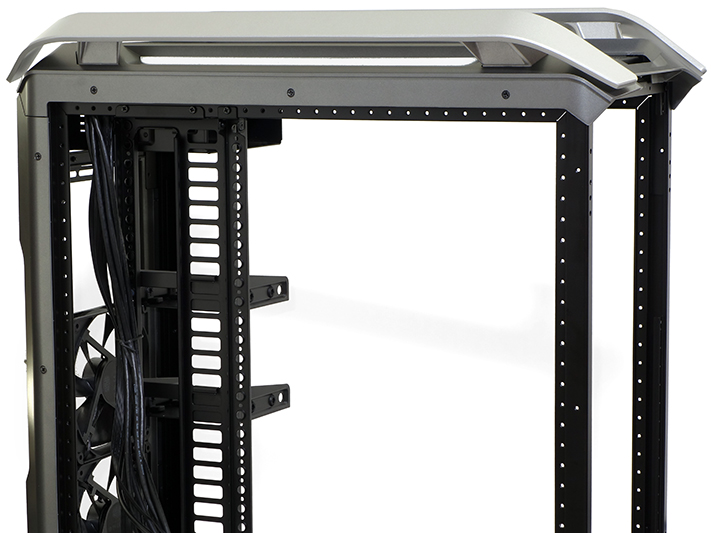
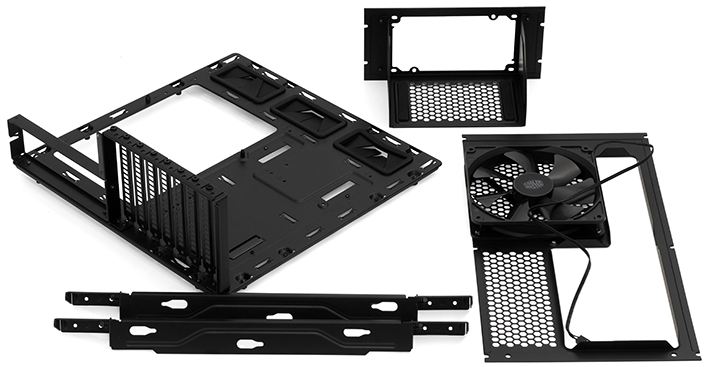
As we continue stripping pieces from the C700P, we can imagine a variety of alternative configurations, such as swapping the power supply and motherboard trays to make room for a bottom-mounted radiator, or placing the motherboard tray on the right side for an upside-down design.
MORE: Best Cases
MORE: All Case Content
-
shrapnel_indie Case has some looks. Has four USB on the front. Has flexibility. Color me impressed on that, Cooling? not so impressed. Price? Lian-Li territory pricing: Too rich for my blood. So, unless they have a sale on it that puts it about 66% off when its time for me to grab a new case... I'll pass.Reply -
johnsaar2005 You only reviewed this from an air cooling perspective. If your going to fully review a case you need to go over water cooling custom loops and enclosed aio. People who are interested in this case are most likely not going to use stock fans and will purchase or have better available from previous builds. This review seems rushed.Reply -
Crashman Reply
They're all a little rushed these days, but we've brought on another case editor to ease the burden.20219978 said:You only reviewed this from an air cooling perspective. If your going to fully review a case you need to go over water cooling custom loops and enclosed aio. People who are interested in this case are most likely not going to use stock fans and will purchase or have better available from previous builds. This review seems rushed.
To be fair, cases like this would need to be tested two ways, and the second way would require a completely different standardized cooling system. Standardizing is tough when you can't pick a format:Is it fair to test a 3x 140mm case with a 2x 120mm cooler, or should 2x 120mm cases be excluded from the second test?
-
milkod2001 Looks great but it is a monster case. At half size to accommodate CPU, 1x GPU, 1x SDD and 2x HDDs comfortably using the very same designs at $150 would definitely make more people interested in.Reply -
thundervore CoolerMaster do not get it. 90% of the people out there do not want a monster case anymore, its not the year 2000! No one is going to buy this throw in 2x 420 radiators an eATX board with triple GPU and water cool everything creating a 50LB monster when they can go AIO with a ITX and AIO GPU. Everyone is trying to go smaller with more power. If this case was microATX with 280 rad support then it will work but this case will only be seen on showroom floors, or on review sites until the next thing some out.Reply -
Sam Hain Christ on a bike! 47.9lbs, without innards (hardware) being installed. I feel L5, L4 and L3 being ruptured just having to heave this monolith from the floor to bench (even with using proper lifting technique) to begin breathing life into it.Reply -
Crashman Reply
I had to carry it from my build bench to my photo bench and back, with another 15 pounds or so of hardware installed :D20224388 said:Christ on a bike! 47.9lbs, without innards (hardware) being installed. I feel L5, L4 and L3 being ruptured just having to heave this monolith from the floor to bench (even with using proper lifting technique) to begin breathing life into it.
-
Sam Hain Reply20224412 said:
I had to carry it from my build bench to my photo bench and back, with another 15 pounds or so of hardware installed :D20224388 said:Christ on a bike! 47.9lbs, without innards (hardware) being installed. I feel L5, L4 and L3 being ruptured just having to heave this monolith from the floor to bench (even with using proper lifting technique) to begin breathing life into it.
You sir, are an Olympian! :bounce:
